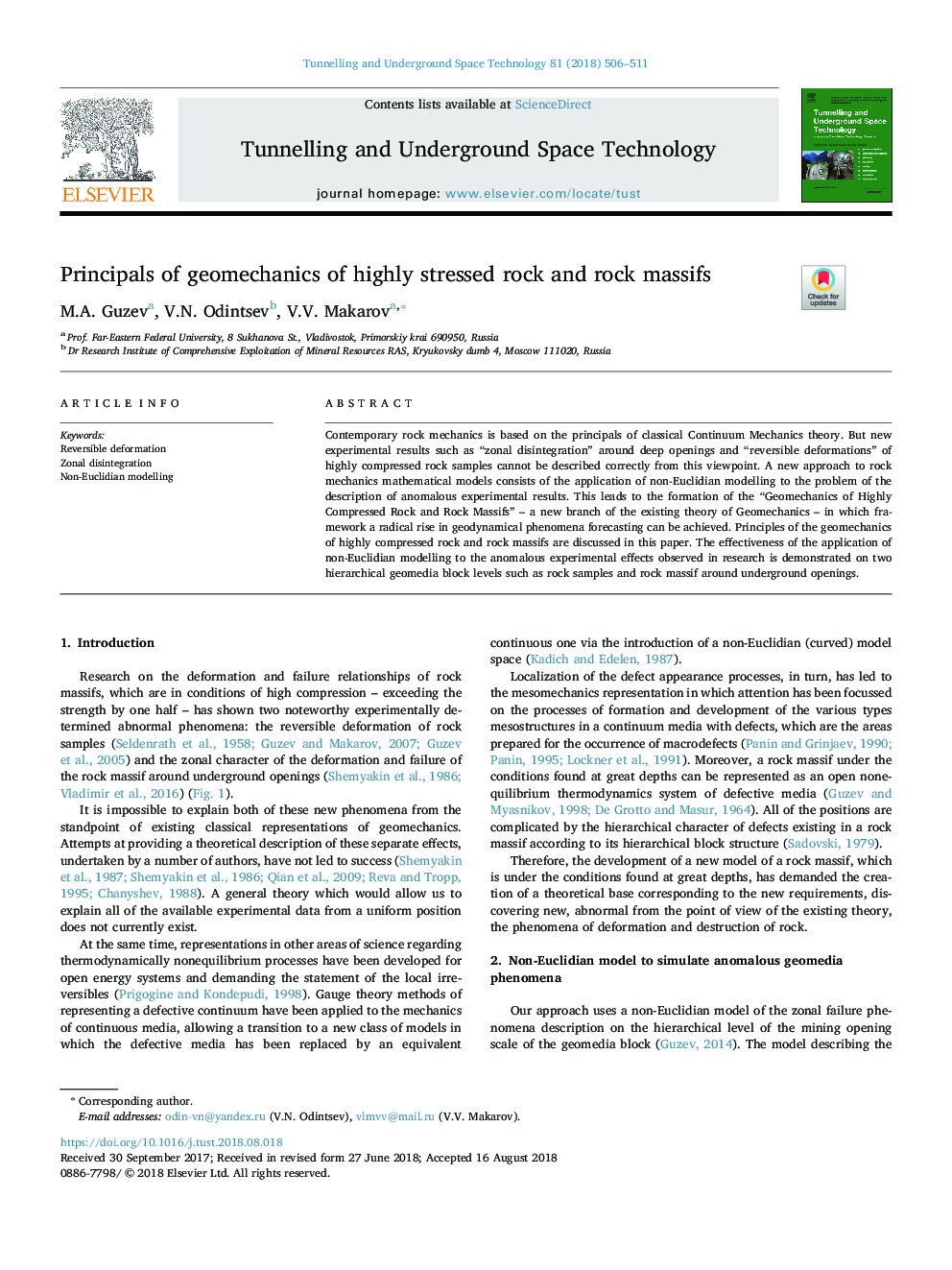| Article ID | Journal | Published Year | Pages | File Type |
|---|---|---|---|---|
| 11001400 | Tunnelling and Underground Space Technology | 2018 | 6 Pages |
Abstract
Contemporary rock mechanics is based on the principals of classical Continuum Mechanics theory. But new experimental results such as “zonal disintegration” around deep openings and “reversible deformations” of highly compressed rock samples cannot be described correctly from this viewpoint. A new approach to rock mechanics mathematical models consists of the application of non-Euclidian modelling to the problem of the description of anomalous experimental results. This leads to the formation of the “Geomechanics of Highly Compressed Rock and Rock Massifs” - a new branch of the existing theory of Geomechanics - in which framework a radical rise in geodynamical phenomena forecasting can be achieved. Principles of the geomechanics of highly compressed rock and rock massifs are discussed in this paper. The effectiveness of the application of non-Euclidian modelling to the anomalous experimental effects observed in research is demonstrated on two hierarchical geomedia block levels such as rock samples and rock massif around underground openings.
Keywords
Related Topics
Physical Sciences and Engineering
Earth and Planetary Sciences
Geotechnical Engineering and Engineering Geology
Authors
M.A. Guzev, V.N. Odintsev, V.V. Makarov,
